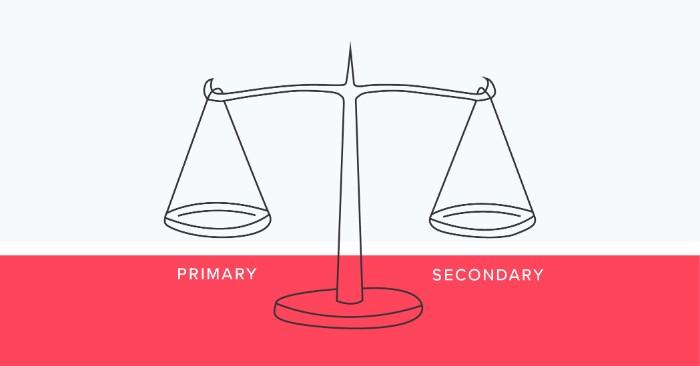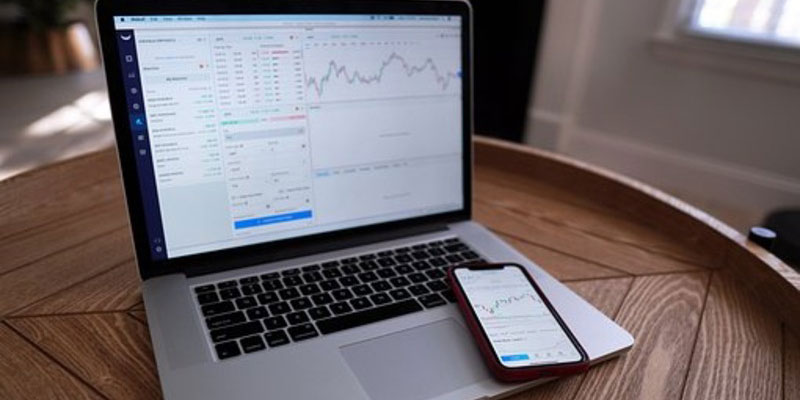Advertisement
A Look at Primary and Secondary Markets
Nov 11, 2024 By Kelly Walker
One of the most important goals for investors is maximizing returns and reducing risk. To achieve this goal, having a good understanding of primary and secondary markets is essential.
Primary markets are where public investors issue and buy securities, while secondary markets allow current owners to trade their investments with each other efficiently. These concepts may seem contradictory at first glance, but they work together to form the backbone of the investment world.
This blog post will explore how primary and secondary markets interact and why it benefits those looking to make smart investments.
What Are Primary and Secondary Markets, and How Do They Differ From Each Other?

Primary markets are the initial place for investments, and public companies issue securities. These transactions involve the purchase of stocks, bonds, and other security instruments directly from the issuer. This process helps new businesses raise capital and allows investors to buy shares in promising companies with a low cost of entry.
Secondary markets involve trading these securities amongst investors and allow for the transfer of ownership from one investor to another. This process is faster, more efficient, and incurs lower transaction costs than primary markets when investing in stocks and bonds.
Primary and secondary markets differ in several ways. Companies typically use primary markets to raise capital, with investors buying securities directly from the issuer. Secondary markets involve trading existing securities between investors, providing a more cost-effective way to purchase stocks or bonds.
Additionally, primary markets are subject to stricter regulations than secondary markets. Understanding the differences between primary and secondary markets is essential for investors looking to maximize their returns while managing risk.
Different Types of Primary Markets and Their Benefits
There are three main types of primary markets.
Direct Placements
Direct placements involve a company selling its securities directly to one or more investors without going through an underwriter. This arrangement is often used when seeking financing from institutional investors such as banks or mutual funds.
The primary benefit of direct placements is the ability to quickly raise capital without spending time and money on going public.
Public Offerings
Public offerings involve a company issuing its securities to the general investing public through an underwriter. Public offerings usually raise large amounts of capital to fuel growth or expansion.
Companies use the funds raised from public offerings to finance new projects and pay down debt. The primary benefit of a public offering is its ability to raise large amounts of capital quickly with relatively low transaction costs.
Private Placements
Private placements involve a company issuing securities directly to accredited investors, such as wealthy individuals and institutions. These investments are often used to finance growth or expansion in a company’s operations.
The primary benefit of private placements is the ability to secure large amounts of capital without going public.
Understanding the Role of the Secondary Market in Trading Assets

Investors have various options when it comes to trading assets and understanding the role
of the secondary market is key for maximizing returns and reducing risk.
Primary markets are where public investors issue and buy securities, and these transactions often involve large sums of money. Secondary markets allow current owners to trade their investments with each other more efficiently, providing them with access to lower prices and liquidity.
Secondary markets also allow investors to buy assets they may not have otherwise had access to in the primary market. These transactions involve trading existing securities, such as stocks, bonds, commodities, and derivatives. This helps create a more diverse portfolio for savvy investors who can capitalize on market price differences.
The secondary market can also benefit risk management, as it allows investors to diversify their holdings by trading assets across multiple markets. This way, investors can spread out their risks and reduce the overall volatility of their investments.
Examples of Popular Secondary Markets and Their Advantages
The secondary market is a key part of the investment world and an integral part of any investor’s portfolio. Examples of popular secondary markets include the following.
New York Stock Exchange (NYSE)
The New York Stock Exchange (NYSE) is the largest exchange in the world and a great place to buy and sell stocks. Many of the biggest companies in the world, such as Apple, Microsoft, Tesla, and Amazon, are listed on this exchange.
One of its advantages includes access to liquidity from a large pool of buyers and sellers which helps to ensure that investors can find the prices they’re looking for.
Nasdaq
The Nasdaq is another large stock exchange, second only to the NYSE in size. It is home to some of the most innovative companies in the world, including those from the tech sector, such as Apple, Microsoft, and Google. The Nasdaq offers several advantages to investors, including liquidity, low fees, and the ability to trade stocks 24/7.
Foreign Exchange Markets (Forex)
The foreign exchange market (forex) is a global network of buyers and sellers exchanging currencies. This market operates around the clock and gives traders access to the world’s most liquid and actively traded markets. Forex trading offers investors high liquidity, low transaction costs, and various currency pairs that can be traded.
Factors to Consider When Investing in Primary or Secondary Markets
Investing in primary or secondary markets can be a great way to maximize returns and reduce risk. However, investors need to understand the differences between these two types of markets to make informed decisions.
When investing in primary markets, investors need to consider the level of liquidity available. Primary markets tend to have low liquidity since the securities are just being issued, making it difficult to quickly get out of a position.
Additionally, investors should consider how much capital they need to raise and how many buyers there are for the securities they offer.
In secondary markets, investors need to look at the current price of any given security and its performance history. This is important to ensure that they buy the investments at a fair price and that there is enough historical data to make an educated decision.
Additionally, investors need to consider the current market conditions and any potential risks associated with the security before investing.
Tips for Navigating Both Primary and Secondary Markets.
- Set aside a portion of your assets in case of an unexpected surge in the market or a sudden drop. A safety net can help you avoid losses and secure your investments
.
- Monitor the markets regularly to keep up-to-date with any changes or developments that could affect your investments. This includes tracking stock prices, economic indicators, and political news.
- Utilize financial tools like stock screens, charts, and graphs to gain insight into how different markets perform at any given time. These insights can help guide your investing decisions in primary or secondary markets.
FAQs
What are the primary and secondary market objectives and functions?
Primary markets, or new issue markets, exist to provide companies with an avenue to raise money by issuing stocks and bonds. Companies may use the funds raised to invest in growth initiatives or pay off debt. Meanwhile, secondary markets facilitate trading between existing investors looking to buy and sell the securities they already own.
What is the role of the secondary market in primary market?
The secondary market provides liquidity to the primary market and allows for more efficient pricing since multiple buyers and sellers can set prices through bidding and asking.
Why is the primary market important?
The primary market is essential for companies to raise capital quickly and efficiently. This is especially beneficial during economic uncertainty, as companies need a way to fund their operations or take advantage of opportunities that may arise.
Conclusion
Understanding primary and secondary markets and their differences is an important step for anyone considering investing in either. With the right knowledge of how these two markets differ and how each can benefit investors uniquely, you will have the tools to navigate both markets confidently.
Before deciding to invest, research and examine the various types of primary markets available and consider what advantages a secondary market may provide. Knowing when and where to invest wisely could make all the difference in generating a significant return on investment.
Advertisement

10 Largest Software Companies

A Look at Primary and Secondary Markets

Best Online Bookkeeping Classes

How to Use Mint: Budget Simply

Demystifying IPO Investments: How to Buy Your First IPO Stock

Why The Profit Boom Fueling Stocks Is a Mirage

10 Steps to Becoming a Day Trader

Interest In Capitalization: What It Is, How It Operates, and a Sample

When is the Right Time to Buy a House?

